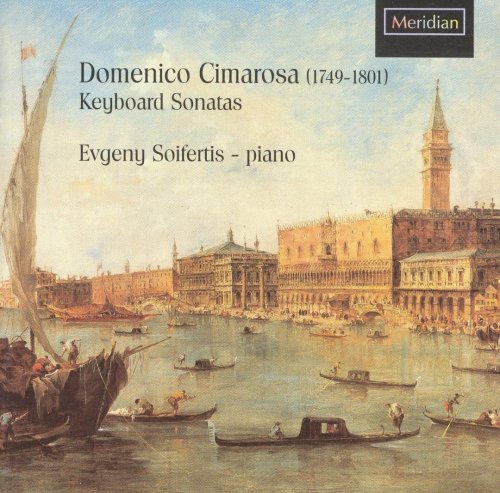Evgeny Soifertis - Domenico Cimarosa: Keyboard Sonatas (2004)

Artist: Evgeny Soifertis
Title: Domenico Cimarosa: Keyboard Sonatas
Year Of Release: 2004
Label: Meridian
Genre: Classical
Quality: FLAC (image+.cue,log,scans)
Total Time: 68:26
Total Size: 228 Mb
WebSite: Album Preview
Tracklist: Title: Domenico Cimarosa: Keyboard Sonatas
Year Of Release: 2004
Label: Meridian
Genre: Classical
Quality: FLAC (image+.cue,log,scans)
Total Time: 68:26
Total Size: 228 Mb
WebSite: Album Preview
1. Sonata in F major C84
2. Sonata in F major C71
3. Sonata in A minor C55
4. Sonata in A major C3
5. Sonata in A minor C58
6. Sonata in D minor C79
7. Sonata in B flat major C1
8. Sonata in B flat major C78
9. Sonata in G minor C61
10. Sonata in G major C15
11. Sonata in D major C30
12. Sonata in D minor C17
13. Sonata in C minor C68
14. Sonata in E flat major C44
15. Sonata in C minor C66
16. Sonata in E flat major C67
17. Sonata in B flat major C69
18. Sonata in G minor C52
19. Sonata in G major C32
20. Sonata in G major C82
21. Sonata in D major C76
22. Sonata in D minor C9
23. Sonata in B flat major C80
24. Sonata in C minor C49
25. Sonata in E flat major C37
26. Sonata in A minor C36
27. Sonata in A major C11
28. Sonata in A minor C2
29. Sonata in B flat major C27
30. Sonata in E flat major C74
31. Sonata in D major C13
32. Sonata in A major C87
Performers:
Evgeny Soifertis, piano
Opera composer Domenico Cimarosa wrote nearly 90 keyboard sonatas that, until the late twentieth century, were ignored by musicologists as well as performers. It is easy to understand why, when they are compared to contemporary works by Mozart and Haydn. Cimarosa stuck to the one-movement sonata form that was used by Domenico Scarlatti. There is some evidence that Cimarosa considered using the three-movement structure, but no such sonata by him has been found, nor has there been found any indication that some of the single movements should be combined in such a way. The design of the sonatas is simple: two lines, with the melodic material in the right hand, usually in binary form, and sustaining one mood throughout. The texture is not usually very full, either, and most do not last much more than two minutes, if that. The attractiveness of the sonatas lies almost completely in the inventive melodies and the different character of each one, which Evgeny Soifertis brings out wonderfully in this collection. The 32 sonatas here are captured with excellent sound. He makes the most of these little works, varying their order to exhibit each one's character effectively. They range from the quiet, graceful, aria-like No. 55, to the jovial and energetic No. 15. Soifertis even manages to find hints of orchestral richness in No. 78 and No. 44, where the left hand is slightly more than just a harmonization of the melody. No. 30 and No. 27 are Baroque-sounding, as are several of the other sonatas, with rapidly repeating notes in the accompaniment, reminiscent of Vivaldi, and ornamentation reminiscent of Scarlatti. One of the best of the selections is also the longest one, No. 71. It is vivacious and even technically flashy in its happy bustling. Opposite in character is the melancholy No. 22, very lyrically and beautifully played by Soifertis. His sympathy for these sonatas and sensitivity in playing them shows them at their best.

![Nana Vasconcelos - Saudades (1980/2025) [Hi-Res] Nana Vasconcelos - Saudades (1980/2025) [Hi-Res]](https://www.dibpic.com/uploads/posts/2025-12/1766056483_cover.jpg)




![Tomasz Stańko - Piece for Diana and Other Ballads (Polish Radio Sessions vol. 1/6) (2025) [Hi-Res] Tomasz Stańko - Piece for Diana and Other Ballads (Polish Radio Sessions vol. 1/6) (2025) [Hi-Res]](https://www.dibpic.com/uploads/posts/2025-12/1765788761_cover.jpg)

